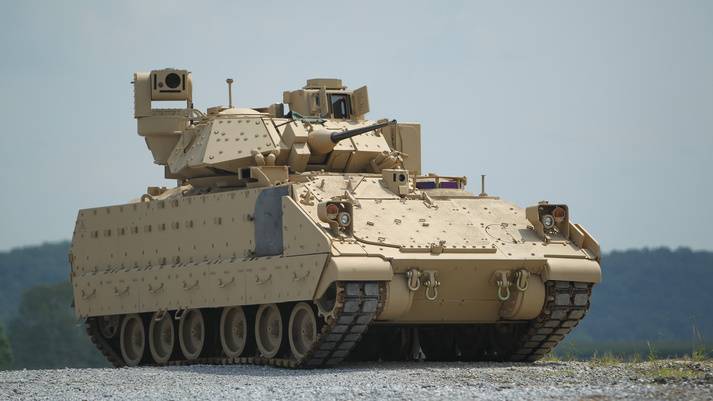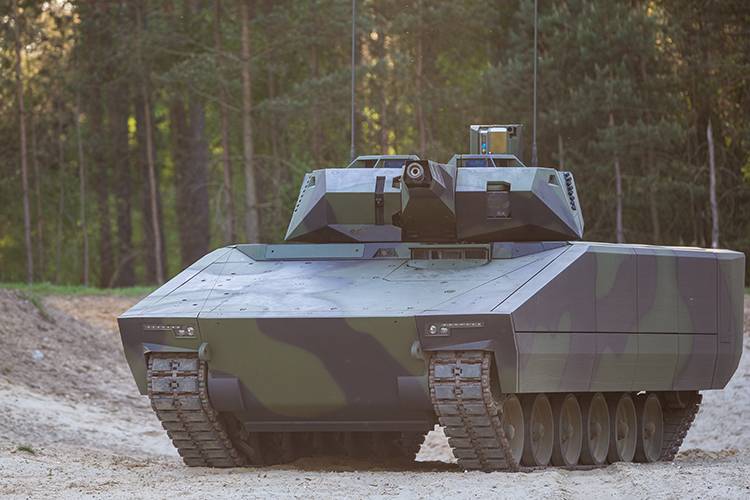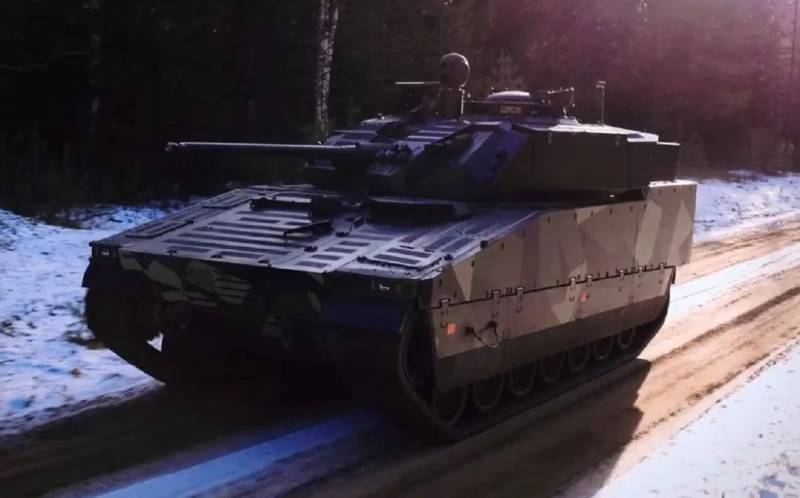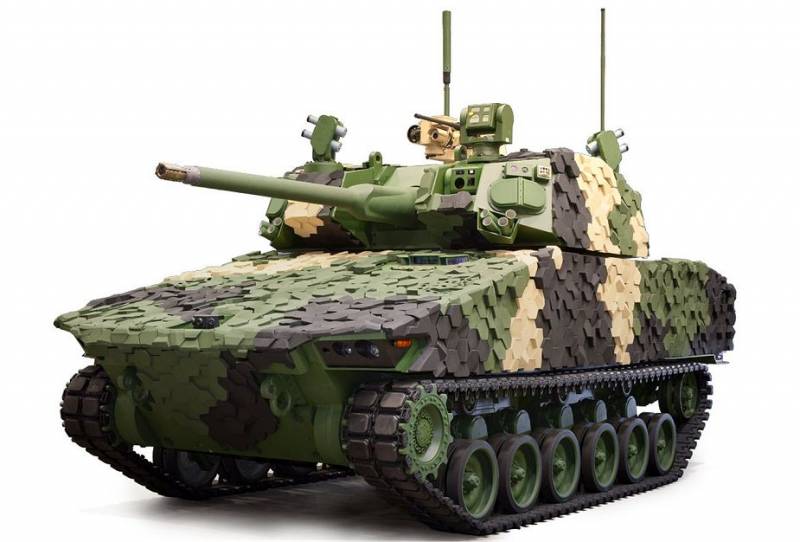Restarting the OMFV program. Pentagon accepts bids for M2 Bradley replacement

Since 2018, the Pentagon has been developing a promising infantry fighting vehicle OMFV (Optionally Manned Fighting Vehicle, "Optionally Manned Fighting Vehicle"), designed to replace the existing M2 Bradley in the future. In the recent past, the program ran into serious difficulties and had to be restarted. Now the updated OMFV is entering a new stage.
Development difficulties
Work on creating a modern replacement for Bradley was launched in mid-2018, and a few months later the project was given the modern name OMFV. In March 2019, the customer began accepting applications for participation in the design. Several US and foreign companies have joined the program with a number of new or revamped projects.
The requirements of the Pentagon were quite strict, because of which a number of participants dropped out of the program even before the completion of its first stage. By the beginning of 2020, there was only one member left in OMFV - General Dynamics Land Systems. On January 16, the US Department of Defense officially stopped the OMFV program due to the impossibility of an effective continuation. The Army has admitted that contractors are unable to meet its high demands in the desired tight deadlines.
On February 7, the OMFV program was restarted. A "market research" was conducted to determine the needs of the army and the capabilities of the industry. As a result of these works, the requirements for the BMP were reduced. We also rebuilt the basic approaches to the development of such a technique. The program was divided into five stages. Its main tasks include simplifying international cooperation and ensuring the integration of necessary but underdeveloped technologies.
The termination and restart of the program drew criticism from legislators and led to problems in approving the FY2021 defense budget. The Pentagon was accused of wasting money on the OMFV's "first attempt" and that the restart would lead to a serious shift in the timing of rearmament. In addition, there were complaints about the organization of the program and interaction with its participants.
The first phase
To date, the US Army has completed the preliminary research phase and has formed updated requirements for the future BMP. On July 17, we issued a new Opportunity Request and re-invited potential contractors to participate in OMFV. Acceptance of applications will last forty days, after which the Pentagon will begin to analyze the proposals and select the most successful ones.
According to the plans, the OMFV program will be divided into five phases. The first phase starts now, and based on its results, the customer will receive technical proposals. They will be considered until next spring. In June 2021, the second phase of the program starts: the Pentagon will issue up to five contracts for preliminary design. These works will last until mid-2023. g.
Based on their results, three projects will be selected for detailed study and subsequent construction of experimental equipment. By mid-2027 f. The Pentagon is going to select the winner of the program. In 2028-2029. it is supposed to start production and start re-equipment of combat units.
"Optionally piloted"
The Pentagon has already announced part of the tactical and technical requirements for a promising BMP, but other information remains unknown and will be disclosed later. Call for proposals is open, but the list of program participants has not been determined. Accordingly, it is too early to talk about specific projects and their technical features.
The goal of the OMFV is to create a promising armored combat vehicle capable of transporting infantry and supporting it with cannon-machine gun and missile systems. It is necessary to ensure the possibility of effective work in network-centric management structures. In addition, as the name of the program suggests, it is necessary to create a groundwork for unmanned use of technology.
The conditions of the previous OMFV program provided for the creation of an armored vehicle with a crew of two people and a troop compartment for six or more seats. Rather high demands were made on protection, and the armament had to ensure the defeat of a wide range of actual targets. It is very likely that the basic requirements were retained, but some tasks were simplified based on the experience of the previous program.
Former and future members
All major foreign developers of armored combat vehicles took part in the "first attempt" to create the OMFV, but their work ended in nothing. It is likely that the same companies with previously proposed projects will participate in the relaunched program, although one should not exclude the possibility of their revision to meet the new requirements.
For a short time, BAE Systems with a modified version of the CV-90 BMP was a participant in OMFV. She joined the work in 2018, but left the program in June 2019 due to difficulties in meeting the requirements on time.
Raytheon and Rheinmetall joined forces and offered the Lynx BMP, modified in accordance with the requirements of the Pentagon. Under the terms of the program, by October 1, 2019, they were supposed to present an experimental vehicle, but did not have time to do so. It was not possible to resolve this issue, and the American-German project dropped out of the program.

As a result, the Griffin III armored vehicle from General Dynamics Land Systems became the only contender for the contract. However, in her case, not everything went smoothly. After just a few months, the customer decided to stop the entire program.
Replacement postponed
According to the results of the OMFV program, the US ground forces will have to receive a new BMP with broad capabilities. According to current plans, for a full renewal of the fleet of armored vehicles, it is required to build about 3,5-4 thousand promising infantry fighting vehicles. The first of them are supposed to be sent to the troops in 2028-2029. It will take several years to produce the required amount of equipment, and the rearmament will be completed only by the end of the thirties.
However, all this remains a matter of the distant future. While the Pentagon will have to accept and consider applications, and then select projects for further development. How many applications will be received is unclear. Next year, no more than five projects will receive support. However, it is easy to see that last time only three companies joined the program.
How successful will the second attempt at the OMFV program be? Great question. The first ended in failure due to excessive demands on the contractor. This time, the Pentagon took into account its mistakes, which should contribute to the successful completion of the work. However, all this led to a serious loss of time and, accordingly, to a shift in the timing of obtaining real results. In addition, the second OMFV program also risks ending in nothing and only lead to a waste of money and time.
In general, the US Army can expect to receive the desired BMP in the required time frame, but various negative factors remain that can affect the situation. Therefore, the BMP M2 for 10-12 years will maintain the current position in the army. As a result, new Bradley modernization projects may be required, which will lead to new costs and problems. However, there are no other ways out of this situation yet.


Information